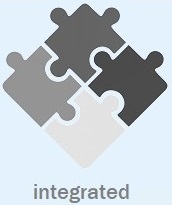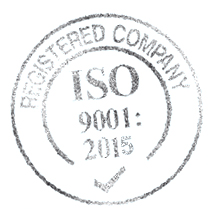 |
HSEQ Template with Tools |
|||
|
||||
|
IMS Templates: ISO 9001+14001+45001 ISO 9001+14001 ISO 9001+45001 ISO 14001+45001
Used by organizations around the world, our integrated management systems have been successfully assessed and certified by Registrars and Certification Bodies such as UKAS, DNV, Lloyds Register, BSI, DNV, BM Trada, LRQA as well as hundreds of independent external auditors.
Our mission is to provide you with compliant, tested, high-quality documented information to establish the principles of Quality and Environmental Management Systems integrated the right way.
| 0 Procedures | 34 Procedures | 34 Procedures with Tools |
Internal Audit | ||
$125 USD |
$599 USD |
$899 USD |
$249 USD |
||
Who is this for? |
Refresh your Documentation | Refresh your Documentation |
First Time Implementation |
Internal Auditing |
|
Integrated Management System Manual |
✔ |
✔ |
✔ |
✘ |
|
Procedures - buy seperately |
0 |
34 - view list |
34 - view list |
7 |
|
Process Maps, Turtle Diagrams |
0 |
58 |
58 |
12 |
|
Reports & Forms |
0 |
106 - view list |
106 - view list |
13 |
|
Project Plan - buy seperately
18-Step Implementation Checklist |
✘ ✘ |
✘ ✘ |
✔ ✔ |
✘ ✘ |
|
Internal Auditing - buy seperately
Internal Audit Programme |
✘
✘ |
✘
✘ |
✔
✔ |
✔
✔ |
|
Gap Analysis - buy seperately
|
✘ |
✘ |
✔ |
✘ |
|
Guidance - buy seperately |
✘ |
✘ |
|
|
|
Training
|
✘ |
✘ |
✔ |
✘ |
|
Help & Support
|
✔ |
✔ |
✔ |
✔ |
|
Easy to Edit
|
✔ |
✔ |
✔ |
✔ |
|
|
$125 USD |
$599 USD |
$899 USD |
$249 USD |


|
Customers: 132 countries (Nov 2023) We are 100% confident in the quality and contents of our products. Used by thousands of organizations around the world, our templates have been sold online since 2002. Please read our Money Back Guarantee. |
Who Is The Template For?
The Templates are used by first-timers following our step-by-step, in-depth clause-by-clause guidance documents; and implemented by experienced Health & Safety, Environmental and Quality Management System Managers wishing to structure, streamline and improve their IMS processes and existing documented information.
The application of our ISO integrated management system templates is scalable and generic; regardless of the size and type of organization. The elements that form the management system are the same; your organization can implement this.
FAQs |
Can't Find What You're Looking For?
|
Benefits of Getting ISO Certification
It may seem that the task is daunting, however, data has shown that companies have greatly benefited from getting ISO certified.
To satisfy a customer’s needs, the company must first identify and understand their market and its needs. By having insight regarding the needs of their market, companies are able to continuously deliver products and services that fulfil the needs of their customers.
By putting environmental, health and safety, and quality management issues at the forefront of everything your business does, you can offer your employees a safer and healthier place to work, assess and reduce the impact your products, services and operations have upon the environment, and to build positive, long-term relationships with your employees, customers, stakeholders and interested parties.
Collating all Integrated Managements System (IMS) documents and having them certified as ISO compliant helps to streamline the company’s internal and external issues, IMS processes and address customer requirements. It also helps to interface with other external ISO certified companies.
Getting or even attempting to get ISO certification is no easy feat. As mentioned earlier, having this certification puts a company in the ranks of other companies from around the world that follow the same high standards.
The integrated documentation enables you to focus on improving your organization's risk profile and encourage a culture of safety and environmental awareness, helping your organization to build long-term trust and integrity!
Businesses that comply with ISO have documented procedures and IMS processes that strive to improve products and services; it also aims to promote the professional development of its employees and the company culture.
Because getting ISO-certified impels that you meet international standards of practice, there are many companies that make ISO certification a requirement to become an accredited partner or supplier of their organization.
Without ISO certification, often you would not even be able to bid for a contract.
Benefits of Using a Template For Your IMS
Various integrated management systems and templates are widely available for any and every business that may want a helping hand in getting their system up and running. You may feel that templates are not for you and will not fit your organization — but your really should consider them, they bring plenty of benefits.
Sets the expectations of documentation for both Top Management and the scope of work for the Project Manager and employees. Top Management will be expected to provide the resources necessary to cover any processes within their departments, as well as planning and assigning responsibilities for ISO certification.
In the beginning, there is a lot of time and attention required in learning all that goes into developing an IMS. The integrated manual is not the only IMS document that you need. Generally, it takes more than one person to research and figure out what is required of your business and how to get everything started.
Using our integrated management system templates gives you a fantastic starting point, allowing you to jump right into documenting your IMS processes rather than spending time worrying about how to go about it.
When it comes to implementing IMS processes, there are requirements which apply to your business and some which do not. Having an integrated template that already spells out the requirements for you will make it that much easier to take away the ones that don't apply.
Documenting your IMS processes can be a long process that requires a lot of time from any business. Smaller businesses don't always have a lot of extra time as they have fewer employees to dedicate solely to the implementation process.
Using our integrated management system templates can jump-start the process and save you a lot of time in putting everything together on your own.
Using templates to set up an integrated management system can save you time but also money. Using fewer hours at the start is a great way to cut costs.
On top of that, you won't have to hire an outside consultant to make sure you are doing everything correctly. Figuring out your integrated management system in-house is a cheaper option, and an integrated manual template makes that process faster and easier to get through.
Small businesses may not have the same kind of manpower that a large-scale company boasts. Every employee is crucial to the success of the business and has their own part of everything to focus on.
When you use integrated management system templates, it takes away some of the load that might be placed on your employees. By already having a framework in place, there is less work for everyone to do.
In the beginning, implementing an integrated management systems can feel like too big of a change to wrap your mind around. This is a big concern for businesses that don't want to rock the boat too hard and risk it capsizing.
Using an integrated management system manual template gives you a solid foundation to start building that change on. You don't have to worry so much that everything will topple over when you know what you are building on is already proven to work.
For any business, consistency is key. A template helps to prevent anything from getting out of line by giving you a foundation for everything within your management system.
Having this foundation means that no matter who is involved in the management system will follow the same approach. You don't have to worry about everyone doing things their own way when they have a guide to follow.
Although it seems complicated to create the documentation at first, it is quite straightforward to do, with the right template in hand.
Used by Thousands of Companies Worldwide
Written in International English, bought by small businesses, big brands and individuals, our templates have been sold in 132 Countries online (and previously CD) since 2002.
Used by:
The Templates are used by first-timers following our step-by-step, clause-by-clause guidance documents; and experienced IMS Managers wishing to streamline and improve their existing QMS and EMS processes, or to update an existing integrated manual and documented information.
Everything You Need To Achieve ISO Certification

Whether this is your very first ISO implementation or you are transitioning from an earlier version, our fully-editable, comprehensive templates contain the integrated manual, documented procedures, forms, reports, process maps, internal audit checklists, and more that you need to achieve certification.
Simply put, this is the only tool you need for all things ISO 14001.
We understand that some companies don't mind shelling out thousands of dollars to consultants to set up their integrated management systems. However, we care about companies like yours that want to bootstrap the process as much as possible.
But all too often, saving money by staying in-house ends up costing much more time – a resource that you never want to waste. Sure, you could spend hours scouring the web to piecemeal together everything you need for your ISO 9001 + 14001 +45001 implementation project. Ultimately, you may get the desired results for your business.
But what if instead, you decided to work smarter, not harder? Instead of spending top dollar on expensive consultants or wasting time doing it yourself, why not get the help you need from us? Using the same all-inclusive integrated management systems that established and reputable businesses continue to use.
Five Reasons To Choose Our Templates
Secure and Trusted
Pay by Credit Card, Debit Card, PayPal or Apple Pay. Our website has been marked safe by popular virus and malware checkers.

More Than Just IMS Templates, Complete Guides As Well
Our integrated management system manual templates contain everything you need to create your own documented procedures, address risks and get the certification you desire.
However, to take it one step further, we also offer guidance in the form of a clause-by-clause interpretation (see sample) so you can see exactly what you need to do to achieve compliance.
Use the gap analysis checklists to compare the requirements of the standard against your organization’s existing management system. Each question in the checklist refers to a requirement that must be met in order to comply with ISO 9001:2015, ISO 14001:2015 and ISO 45001:2018.
Our in-depth guidance documents take all the guesswork out of completing your ISO 9001, 14001 and 45001 integration project, so that you can get down to business as efficiently and effectively as possible.
Help Your Business Improve and Grow
The integrated management system manual is designed to be implemented within current business practices and serves as an effective tool to help your business grow and improve.